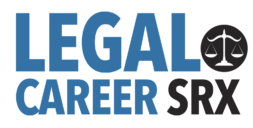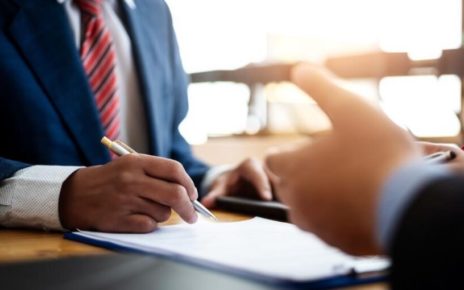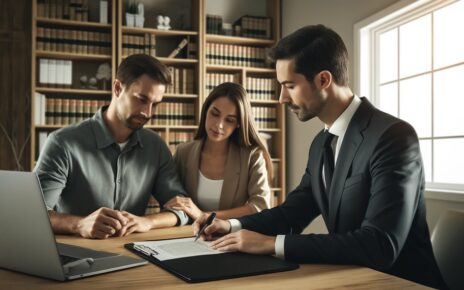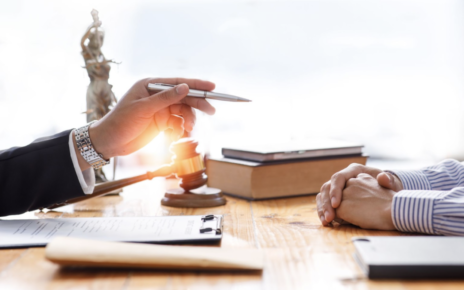Types of Evidence Used in Court
In the realm of legal proceedings, evidence serves as the cornerstone upon which cases are built and adjudicated. The types of evidence presented in court are diverse, each playing a crucial role in establishing the facts of a case.
- Direct Evidence: This includes firsthand observations, such as eyewitness testimony or a video recording of the incident, which directly prove a fact without the need for inference.
- Circumstantial Evidence: Unlike direct evidence, circumstantial evidence requires a judge or jury to make inferences to connect it to a fact in question. It can be powerful but often necessitates a stronger narrative to be persuasive.
- Documentary Evidence: Written documents, emails, contracts, and records are categorized as documentary evidence. They provide a tangible trail that can substantiate claims or refute allegations.
- Physical Evidence: Objects or materials relevant to the case, such as a weapon or clothing, fall under this category. Their condition and location can be pivotal in forming a narrative of the events.
- Expert Testimony: Specialists in various fields may provide expert testimony to clarify complex issues, offering opinions based on their expertise.
The effective use of these evidence types is instrumental in painting a comprehensive picture of the events in question. Lawyers must carefully consider the selection, preparation, and presentation of evidence to ensure it withstands the scrutiny of the legal process and persuasively supports their client’s position.
The Burden of Proof Explained
In the legal system, the burden of proof determines which party is responsible for proving the allegations at hand. This concept is pivotal in both criminal and civil cases, though the standards differ significantly between the two.
- In criminal trials, the prosecution must establish the defendant’s guilt “beyond a reasonable doubt.” This high standard is designed to prevent wrongful convictions, reflecting the principle that it’s better for a guilty person to go free than for an innocent one to be unjustly punished.
- Civil cases, such as asbestos lawsuits, operate under a lower threshold known as “preponderance of the evidence.” Here, the plaintiff must show that it is more likely than not that their claims are true. Active participation from the plaintiff is essential, as they must provide evidence of injury and exposure. The litigation process typically involves phases like discovery, where evidence is exchanged, and expert testimonies, which can significantly influence the outcome. Depending on the case, various compensation types can be recovered, especially in mesothelioma cases.
Understanding the burden of proof is crucial for legal practitioners as it guides the entire process of preparing and presenting a case. It also informs the strategy for both sides, whether it’s gathering sufficient evidence or creating a compelling argument to meet or challenge this burden.
Admissibility and Relevance of Evidence
In the legal arena, the concepts of admissibility and relevance are foundational to the integrity of a trial. Evidence must meet certain criteria to be considered admissible; it must be relevant to the case, not overly prejudicial, and must comply with the rules of evidence.
- Relevance is determined by whether the evidence has any tendency to make a fact more or less probable than it would be without the evidence.
- Admissibility hinges on the evidence being properly obtained and authenticated, and it must not violate any legal rules, such as those against hearsay.
Judges play a pivotal role in deciding which pieces of evidence can be presented to the jury. They assess the probative value against any potential for unfair prejudice or confusion. This gatekeeping function ensures that the trial process remains fair and focused on the facts at hand.
Gathering and Presenting Evidence Effectively
Strategies for Evidence Collection
Effective evidence collection is a cornerstone of building a strong legal case. Attorneys and their investigative teams must employ meticulous strategies to ensure that all relevant facts are uncovered and properly documented. Here are some key strategies used in the process:
- Developing a comprehensive plan: Before collecting evidence, it’s crucial to have a clear strategy that outlines what types of evidence are needed, potential sources, and the methods for obtaining them.
- Preserving the scene: In cases involving physical locations, such as crime scenes, it’s important to secure and preserve the area to prevent contamination or loss of evidence.
- Utilizing technology: Modern technology, including digital forensics, surveillance, and data analysis tools, plays a significant role in gathering and preserving electronic evidence.
- Interviewing witnesses: Witness statements can provide valuable insights and corroborate other evidence. Conducting thorough and effective interviews is an essential skill for legal professionals.
- Documenting evidence: Proper documentation and chain of custody are vital to ensure that evidence remains admissible in court. This includes detailed record-keeping and handling procedures.
Each step in the evidence collection process is critical and requires attention to detail and adherence to legal standards to build a compelling case that can withstand the scrutiny of the courtroom.
Expert Witnesses and Their Impact
Expert witnesses play a pivotal role in the legal process by providing specialized knowledge that is typically beyond the understanding of the layperson. Their testimony can offer clarity on complex issues, ranging from medical malpractice to intellectual property disputes.
Key contributions of expert witnesses include:
- Clarifying Technical Details: They break down intricate subjects into understandable terms, aiding the judge and jury in making informed decisions.
- Establishing Credibility: An expert’s reputation and experience can lend weight to the arguments presented, influencing the outcome of a case.
- Offering Independent Analysis: Experts are expected to provide impartial opinions based on their expertise, which can be crucial in cases where facts are disputed.
However, the impact of expert witnesses is not without challenges. Their effectiveness depends on their ability to communicate complex ideas clearly and the perceived impartiality of their testimony. Lawyers must carefully vet and prepare expert witnesses to ensure their contributions are both credible and comprehensible.
The Art of Persuasive Presentation in the Courtroom
Mastering the art of persuasive presentation is crucial for attorneys who aim to sway judges and juries in the courtroom. This skill involves not only the logical arrangement of evidence but also the effective use of rhetoric and storytelling to create a compelling narrative.
Key elements of persuasive courtroom presentation include:
- Clarity of Message: Ensuring that the argument is clear and easily understandable, avoiding legal jargon that may confuse the jury.
- Emotional Appeal: Connecting with the jury on an emotional level, which can be as influential as the factual basis of the case.
- Credibility: Establishing the attorney’s and witnesses’ credibility to build trust with the jury.
- Visual Aids: Utilizing charts, diagrams, and other visual aids to help illustrate complex points and retain the jury’s attention.
Effective presentation also requires anticipation of the opposing counsel’s arguments and preparing counterarguments. Lawyers must be adept at reading the room, adjusting their delivery as needed, and ensuring that their presentation resonates with the cultural and social backgrounds of the jury members. Ultimately, the goal is to present the evidence in such a way that it not only informs but also persuades, leading to a favorable outcome for the client.
Challenges in Proving Legal Claims
Dealing with Circumstantial Evidence
Circumstantial evidence plays a pivotal role in many legal cases, often forming the backbone of a prosecution or defense when direct evidence is not available. Unlike direct evidence that supports the truth of an assertion directly, circumstantial evidence requires an inference to connect it to a conclusion of fact.
Key considerations when dealing with circumstantial evidence include:
- Establishing a clear and logical chain of events that leads to the desired inference.
- Ensuring that the circumstantial evidence is consistent with the overall narrative of the case.
- Anticipating and countering alternative explanations that the opposing counsel may propose.
Attorneys must be adept at weaving together circumstantial evidence to form a compelling narrative. This often involves a meticulous examination of the details and a strategic presentation that highlights how the evidence aligns with the legal theory being advanced. The challenge lies in presenting circumstantial evidence in such a way that it resonates with the jury’s sense of logic and reason, persuading them to draw the intended conclusions.
Overcoming Hearsay and Objections
In the courtroom, hearsay evidence—statements made outside of court that are presented to prove the truth of the matter asserted—often faces objections due to its potential unreliability. Overcoming these objections requires a clear understanding of the exceptions to the hearsay rule and the ability to demonstrate their applicability to the case at hand.
To navigate the hearsay landscape effectively, legal practitioners may:
- Identify and prepare exceptions to the hearsay rule, such as statements made under the belief of impending death, or statements against interest.
- Establish the credibility of the declarant and the necessity of the hearsay evidence in providing a complete picture of the events.
- Argue for the probative value of the hearsay evidence, showing that its relevance and importance outweigh potential prejudices or risks of misleading the jury.
Successfully addressing and countering objections in court not only strengthens the case but also showcases the legal team’s meticulous preparation and understanding of evidentiary rules. It is a critical skill that can sway the outcome of a trial, emphasizing the importance of continuous legal education and training in evidence handling.
The Complexity of Digital Evidence
In the digital age, evidence often comes in the form of electronic records, communications, and data. The complexity of digital evidence lies in its volatile nature and the technical expertise required to collect, preserve, and interpret it. Unlike traditional physical evidence, digital artifacts can be easily altered, deleted, or manipulated, making the integrity of such evidence a critical concern for legal professionals.
Key challenges include:
- Ensuring the authenticity of digital records.
- Preserving the chain of custody to prevent tampering.
- Deciphering technical data into understandable formats for the court.
- Staying abreast of rapidly evolving technology and legal precedents.
Courts must rely on digital forensics experts to navigate these complexities. These specialists apply rigorous methodologies to extract and analyze data from devices such as computers, smartphones, and servers. The admissibility of digital evidence hinges on demonstrating that the information is relevant, obtained legally, and maintained in an unaltered state. As technology continues to advance, the legal system must adapt to address the nuances of digital evidence and ensure that justice is served in an increasingly connected world.
The Consequences of Insufficient Evidence
Case Dismissals and Acquittals
The absence of sufficient evidence in a legal case can lead to significant consequences, such as case dismissals and acquittals. When the prosecution fails to meet the burden of proof, the court has no choice but to dismiss the charges or acquit the defendant. This outcome not only affects the immediate parties involved but can also have a broader impact on public trust in the legal system.
- Case Dismissals: A dismissal occurs when a case is thrown out of court before trial, often due to a lack of evidence. This can happen at various stages of the legal process, and it prevents the case from moving forward to a full trial.
- Acquittals: An acquittal is a formal judgment of not guilty. It typically occurs after a trial when the jury or judge determines that the evidence presented by the prosecution is not strong enough to meet the standard of proof beyond a reasonable doubt.
These outcomes underscore the critical importance of gathering robust and compelling evidence. They serve as a reminder to legal practitioners that every effort must be made to construct an airtight case, as the consequences of failing to do so can be far-reaching and irreversible.
The Ripple Effect on Justice and Society
The consequences of insufficient evidence extend beyond the courtroom, often causing a ripple effect that impacts justice and society at large. When cases are dismissed or result in acquittals due to a lack of evidence, it can undermine public confidence in the legal system. This erosion of trust can lead to a reluctance to report crimes or cooperate with law enforcement, further hindering the pursuit of justice.
Moreover, the societal implications of these legal outcomes can be profound. Victims and their families may feel that the legal system has failed them, leading to a sense of injustice and a lack of closure. This can be especially true in cases where there is a strong belief in the guilt of the accused, such as those supported by organizations like this cancer group, which provides resources and legal assistance to victims of asbestos-related lung cancer.
In addition to the emotional toll on those directly involved, there can be broader social consequences. For instance, if perpetrators are not held accountable, it may embolden others to commit similar offenses, potentially leading to an increase in crime. Furthermore, the financial burden of unresolved legal claims can fall on society, as victims and their families may require public assistance to cope with the aftermath of a failed legal process.
Learning from High-Profile Case Studies
High-profile legal cases offer a wealth of knowledge for legal professionals and the public alike. They serve as powerful examples of how evidence, or the lack thereof, can sway the outcomes of trials and shape legal precedents. By examining these cases, one can identify patterns and strategies that contribute to successful litigation, as well as pitfalls that may lead to failure.
Key lessons from high-profile cases often include:
- The importance of meticulous evidence collection and preservation.
- The impact of public perception and media coverage on the legal process.
- The role of expert testimony in clarifying complex issues.
Studying these cases also underscores the necessity for a robust legal strategy that anticipates and counters challenges. It is through this lens that future legal claims can be approached with a deeper understanding of the intricacies involved in building a strong, evidence-based case.
Best Practices for Strengthening Your Case
Continuous Legal Education and Training
In the dynamic field of law, continuous education and training are pivotal for legal professionals aiming to strengthen their cases. Keeping abreast of the latest legal precedents, technological advancements, and changes in legislation is essential for effective advocacy.
Key components of ongoing legal education include:
- Regular attendance at legal seminars and workshops
- Participation in mock trials and peer reviews
- Subscription to legal journals and databases
Through these activities, attorneys can refine their understanding of evidence handling and develop more sophisticated legal strategies. Moreover, the knowledge gained from continuous learning can be instrumental in identifying the nuances of complex cases, such as those involving mesothelioma, a rare cancer requiring specialized medical evaluation for diagnosis. The symptoms of this disease, such as pain and weight loss, can be pivotal in constructing a compelling legal claim.
Ultimately, the commitment to lifelong learning equips legal practitioners with the tools necessary to navigate the intricacies of the legal system, ensuring they remain at the forefront of their profession.
Collaboration with Investigators and Other Professionals
In the quest to build a robust legal case, attorneys often need to step beyond the confines of their legal expertise and collaborate with a variety of professionals. Investigators, forensic experts, and industry specialists bring a wealth of knowledge and skills that can significantly strengthen a case. Their insights can uncover critical evidence, provide a clearer understanding of the facts, and contribute to a more compelling argument in court.
Key benefits of such collaborations include:
- Diverse Expertise: Different professionals offer unique perspectives that can reveal overlooked details or interpret evidence in new ways.
- Resource Efficiency: Leveraging the skills of others can save time and resources, allowing lawyers to focus on legal strategy.
- Credibility Boost: Expert testimony can lend additional credibility to a case, persuading judges and juries with authoritative opinions.
To ensure effective collaboration, it is essential to establish clear communication channels, respect each professional’s area of expertise, and integrate their contributions seamlessly into the legal strategy. By doing so, legal teams can present the most comprehensive and convincing case possible, thereby enhancing their chances of success.
Maintaining Ethical Standards in Evidence Handling
In the realm of legal proceedings, the integrity of evidence is paramount. Attorneys and legal teams must adhere to strict ethical guidelines to ensure that the evidence presented in court is both credible and untainted. This involves a meticulous approach to the collection, storage, and presentation of evidence, safeguarding it from any form of tampering or degradation.
Key principles include:
- Transparency in the chain of custody, documenting every individual who handles the evidence.
- Avoidance of any actions that could be construed as tampering, alteration, or fabrication of evidence.
- Ensuring that all evidence is obtained legally and respects the privacy rights of individuals involved.
Failure to maintain these ethical standards can lead to serious consequences, including the dismissal of crucial evidence, sanctions against the legal professionals involved, and a potential miscarriage of justice. It is the duty of all legal practitioners to uphold the law not only in their arguments but also in their evidence handling practices.





